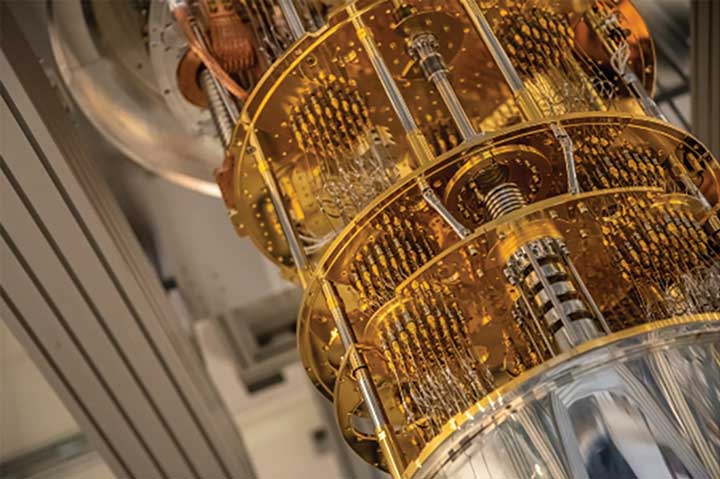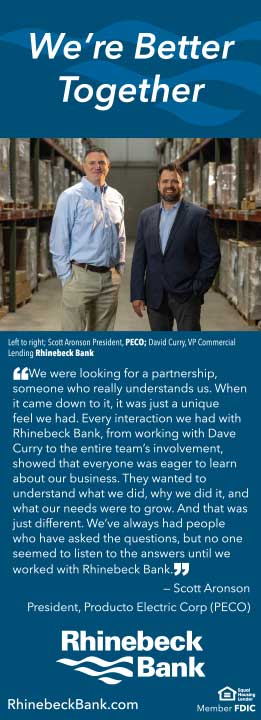The Hudson Valley Leaps into Quantum Computing

Quantum Computing is coming to the Hudson Valley. The Rensselaer Polytechnic Institute in Troy is getting a state-of-the-art quantum computer system, thanks to a generous donation from a co-founder of the multinational tech company Nvidia. The IBM-made computer will be the world’s first on a college campus. If all goes according to plan, this will be the first step in establishing the area as a hub for the burgeoning industry.
So, with all that on the horizon it seems like the right time to ask, what exactly is quantum computing? And what impact will it have on the manufacturing industry?
To those outside the field, it sounds like a phrase lifted from an episode of Star Trek, meant to pass a plywood set off as a piece of advanced future technology. But while the field is still in its infancy, it’s well positioned to move into the mainstream in coming years.
Quantum Computing incorporates elements of computer science, physics, and mathematics. It is built around the theory of quantum mechanics.
Quantum Mechanics is a field of physics that is focused on how particles behave at a microscopic level. The equations scientists use to explain how particles behave are different at subatomic levels than the ones that explain the world we can see around us. Quantum computing takes advantage of those differences to create a new way of performing computations.
The smallest unit of data that a traditional computer can process and store is called a bit. Like an on/off light switch, a bit has two possible states, which are represented as 0 and 1. Different combinations of multiple bits are used to represent more complex information. Quantum computing, by contrast, is based around so-called “qubits.” Like bits, qubits have a value of either 0 or 1, unlike a bit, a qubit can be placed in what scientists call in a “superposition” of states. In other words, it can be in some proportion of both the 0 and 1 states at the same time. If bits work like an on/off light switch, a qubit works like a dimmer switch, giving you more possible options. In a nutshell, quantum computers are able to process data much faster than ordinary computers. In the same way a calculator can find the answer to a long division problem in a second that would take you several minutes to solve, a quantum computer can complete a task or process in milliseconds what might take days with a conventional computer.

As we enter the era of Artificial Intelligence, where the tasks we ask computers to perform will become more and more elaborate and require processing more data, quantum computers will be an essential role to reaching AI’s full potential.
That means RPI is now well positioned to be at the center of the coming technological revolution. Curtis Priem, who co-founded the chip maker Nvidia, donated more than $75 million to make it happen in the hopes that the region will grow into an East Coast Silicon Valley, or “Quantum Valley” as he puts it, attracting talent and business to the area.
Priem, along with Governor Kathy Hochul and RPI President Martin Schmidt believe the region can sustain a tech hub because of four essential qualities which give it an advantage over alternatives: land, water, power and an intellectual “brainbelt”. The original Silicon Valley has run out of space, prompting interest in Arizona, but the desert state lacks the large water reservoirs needed for cooling. Other potential sites, like central Ohio, also face challenges, such as insufficient workforce training.
Schmidt has said that the school will make sure the computer is accessible to the student body, and will begin integrating it into its curriculum.
The Region is also home to one of the world’s few commercial quantum computing centers. At the center of IBM’s campus in Poughkeepsie, NY is the world’s first quantum data center, which the company continues to expand, catering to the growing community of quantum computing users in industry, academia, research and national labs. According to the company the center, which opened in 2019, is now home to more than 20 quantum systems executing more than 2 billion circuits daily. It is the world’s largest fleet of quantum computing systems for commercial and research activity.
As quantum computing takes root in the Hudson Valley, it’s worth considering the possibilities it offers for the manufacturing industry.

Image courtesy of Lawrence Berkeley National Laboratory
Given their ability to process more data faster than traditional computers, quantum computers should be well suited to tackling optimization issues. For example, asking it to determine the fastest route between Points A, B, C, and D, a quantum computer would be able to incorporate more variables than a classical computer to determine its answer, thus leading to a more accurate finding. It’s easy to see this greater reasoning leading to more efficient resource allocation or supply chain coordination.
Automation would be another obvious use. Just as they’re capable of processing more data faster, they are also capable of programing more elaborate tasks, optimizing the operations of robots and improving efficiency.
A less obvious potential use is in the creation of new manufacturing materials. Quantum computers are well suited to simulating molecular and material behavior at an atomic level, enabling the development of new materials. This can also be used for product testing by simulating conditions to test how factors like airflow, water flow, or turbulence will affect a product’s performance.
These are just a few possible applications, and with the technology still in its infancy we’re sure to discover more ways it can be used to optimize efficiency and reduce costs as it moves beyond the research lab into real world use. While the possibilities seem endless, one thing we can be sure of is that they’ll be made a reality right here in the Hudson Valley.



